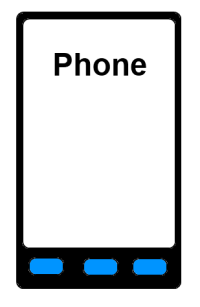Open source hardware answers the problem of mobile device obsolescence


Perhaps you read my, "No iOS 6 for my original iPad? Now, I'm an Angry Bird" post that describes, in detail, my irritation with Apple for no longer supporting my iPad 1. If you haven't, you should so that you'll understand this post. Don't worry, I'll wait for you to finish before I continue.
Now, that you're back, I've come up with a solution to this overt obsolescence dilemma facing tens of millions of disappointed customers--not only from Apple but from other companies as well. Just read the comments from the original post and you'll see that we all face this, "Buy our newest stuff" marketing ploy regardless of your device source.
I don't need to purchase the latest techno gadget thingy every time one hits the market. It's expensive and silly to do so. Sure, in my position, I could make the things pay for themselves by writing about them but then I'm left with the monthly fees and another long term contract. I don't want either. It's too much burden and too much nonsense.
My job is to report on technology, the business of technology, technology innovations and technology companies. It is not my job to try to convince you to buy the newest gadget that you don't need.
A tablet, the new computing platform, should last an expected four or five years--the same as the thing it replaced: The PC. A phone should last at least three years. But, you won't get that attitude from gadget makers. They want you to desire the latest thing in two years or less. They want you to abandon your old device in favor of the new one that has a better processor, a larger screen--although your laptop had a 17-inch screen--and more features that you now must have.
Humbug!
The answer to this is open source hardware.
Yep, that's right. Open source hardware.
It's not unfamiliar territory to you. Although, no one ever called it that before, all of those "white box" PCs are just that: Open source hardware.
Since the early 1980s, white boxes, aka open source hardware, put PCs into almost every home in America. It made sense for those who couldn't afford to purchase a brand but needed or wanted a personal computer. It made sense then and it makes sense now.
Once, you could find hundreds of independent PC builders in a city. In Dallas, where I lived in the mid-1980s, there must have been 500 of them. And, more if you count up the number of random guys who could throw together a PC with a bunch of parts purchased at the First Saturday Computer Sale in downtown Dallas.
Now, imagine that same scenario except with phones and tablets.
I'll call my new "White box" phone, the MyPhone. And, the tablet, the MyPad.
Yes, you can buy a MyPhone or a MyPad fully assembled and ready for an operating system or you can build your own out of parts--just like back in the old days when we'd spend a Saturday afternoon piecing together the hardware that we'd just bought into a real working PC.
It could be the same again with mobile devices. I'm game. Are you?
I'd purchase phone parts, tablet parts and an operating system or download Android and install it. I'd have a phone that might last eight years or more by replacing this or that part along the way, just like I did with the last PC I had.
That way, I could spend a small amount every couple of years, keep my cellular plan, update the OS and enjoy a market hype-free life.
Open source hardware is a good thing.
Obsolescence sucks.
If I take care of my hardware, I should be able to use it for years, not months. The hardware should outlast the cellular contract. In fact, I should be able to move the SIM card from device to device regardless of carrier or device manufacturer.
OK, there's another opportunity for someone: Open source SIM cards.
For me, open source everything makes sense. Computer hardware and software, mobile device hardware, software and just about anything else that you buy that wears out or needs replacement.
Open source hardware is the answer to obsolescence. On all fronts.
What do you think? Would you buy and use "White box" mobile devices? Why or why not? Talk back an let me know.